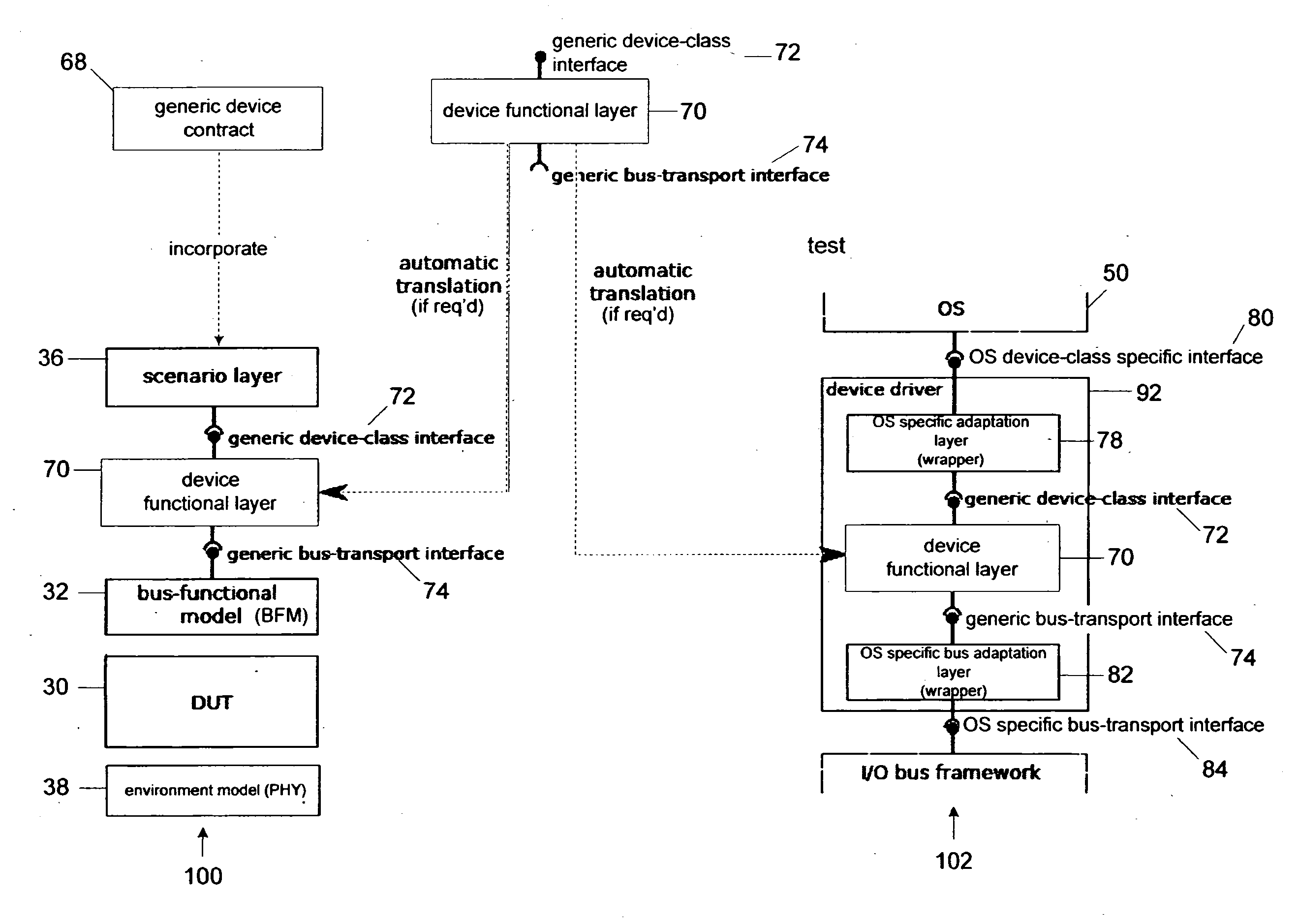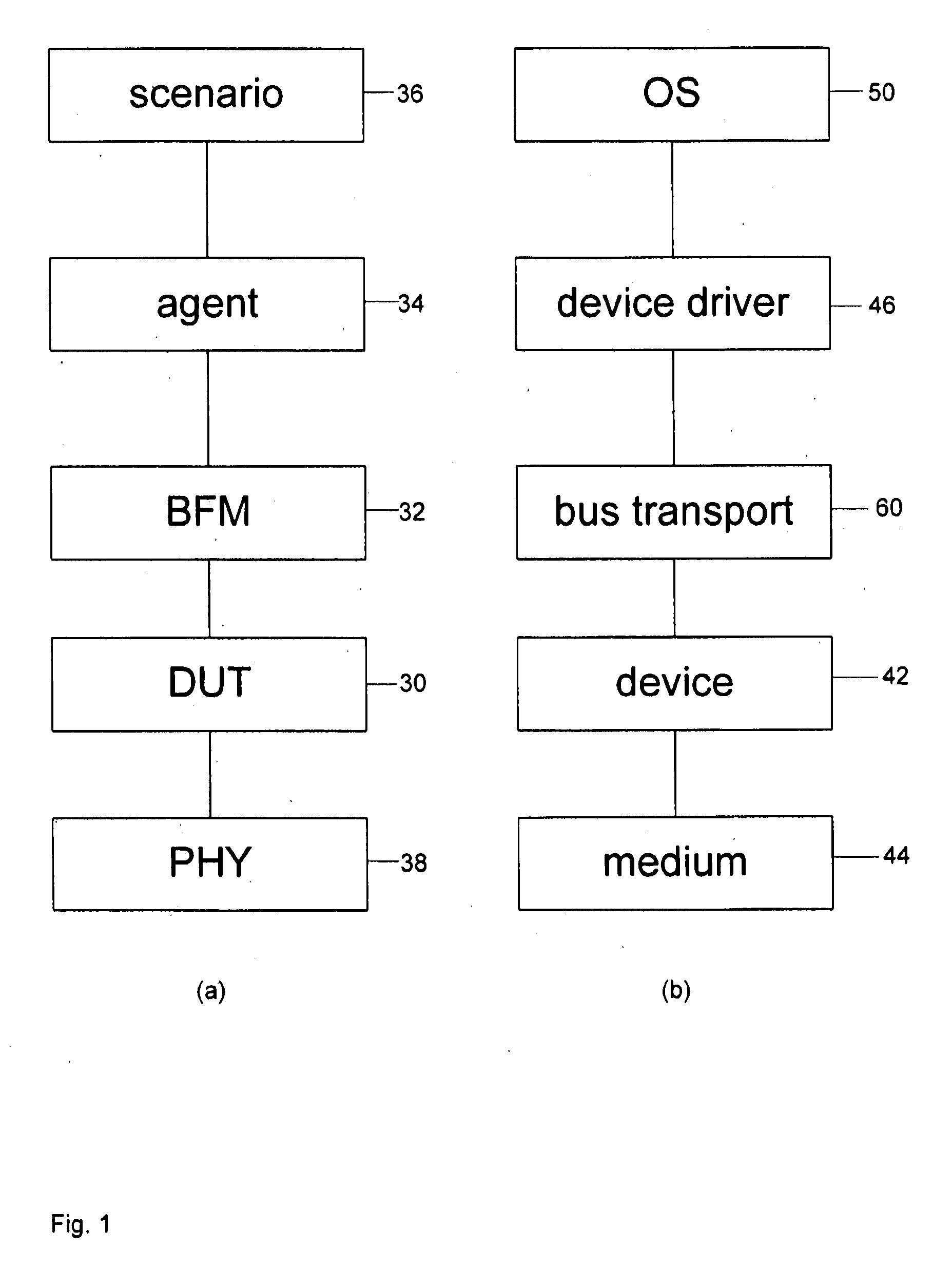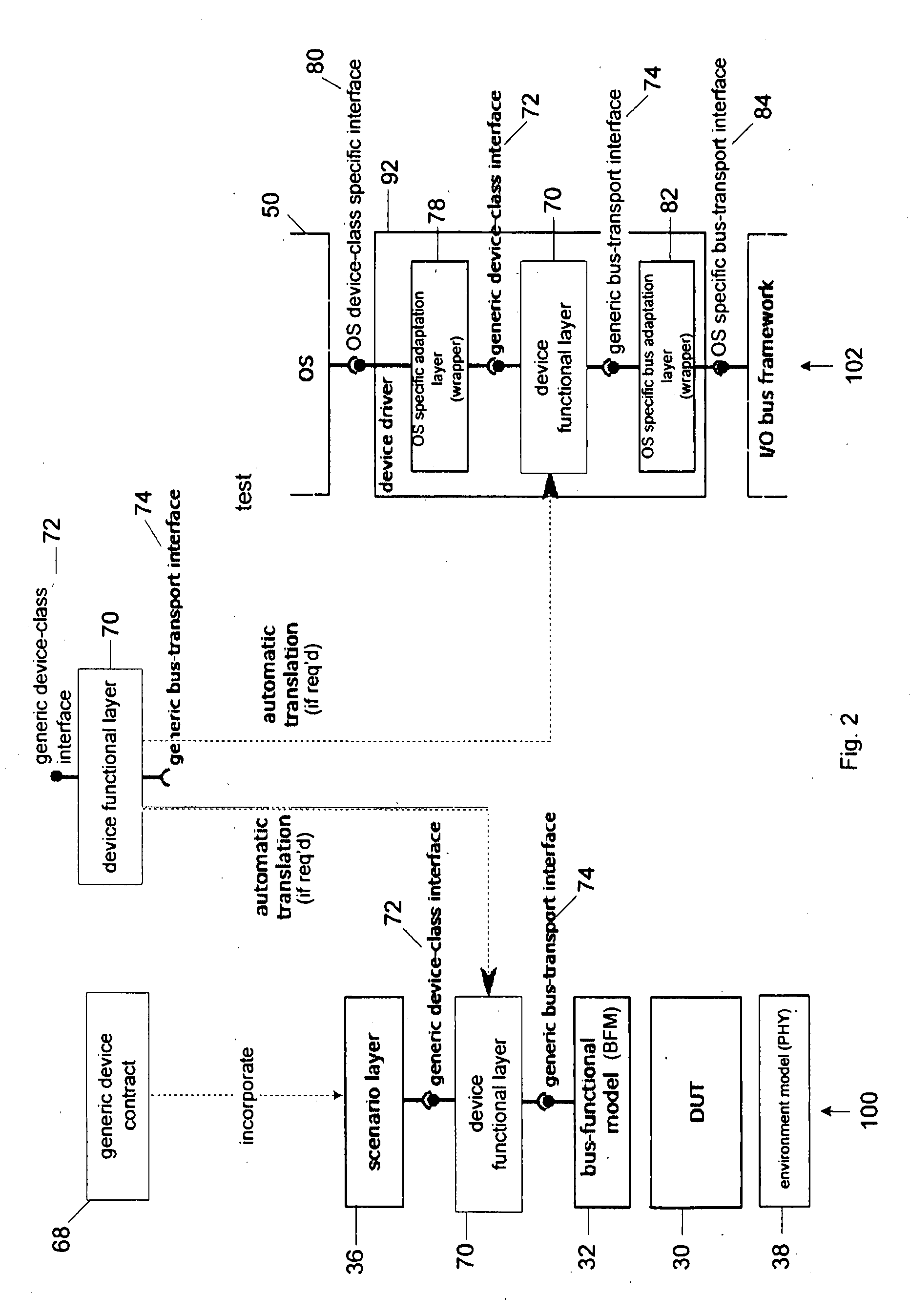Co-design of a testbench and driver of a device
- Summary
- Abstract
- Description
- Claims
- Application Information
AI Technical Summary
Benefits of technology
Problems solved by technology
Method used
Image
Examples
example 2
[0129]FIG. 5 shows the device-driver design workflow. This workflow is integrated into the hardware design and verification workflow. The workflow consists of the following tasks and the steps as performed by a computer system will be described:
Generic Interface Specification 200
[0130]This involves specifying the generic device-class interface 72, the generic bus transport interfaces 74, and the device-class contract 68. This task is carried out once for each device class and each bus type. The processor of a computer system receives at an input port electronic files representative of the interfaces 72 and 74. Alternatively, the computer system may operate to access the interfaces 72 and 74 stored in local or remote memory.
OS Framework Implementation 206
[0131]This involves implementing OS adaptation layer 78 and bus adaptation layer 82 for a particular OS and a particular device class or bus type. This task is carried out once for each OS and each device class or bus type. Again, th...
example 3
[0138]A variation of the flow shown in FIG. 5 is shown in FIG. 6, where the same steps are marked with the same reference numbers. However, in FIG. 6 the step of developing 250 the functional layer 70 is defined as a separate task that is performed before the testbench design 202, 204 task. This allows synthesising 208, 210 a driver 92 for the device before or concurrently with RTL design 224 and verification 226. This approach facilitates early system prototyping. Defects in the functional layer 70 are detected in the process of RTL verification 226, and task feedback 94 can be delivered to the functional layer implementation task 250 so as to create an improved functional layer 70 that can be used in further test bench design 202, 204 and driver synthesis 208, 210.
example 4
[0139]Yet another variation of the flow shown in FIG. 5 is shown in FIG. 7, where the same steps are marked with the same reference numbers. However, FIG. 7 relates to devices that do not fall precisely into one of existing device classes. For example, many devices implement unique features that are not found in other similar devices. Supporting such features requires developing extensions 240 to produce extended generic device-class 72′ and extended bus transport 73′ interfaces. Also extensions 242 to produce an extended OS adaptation layer 78′ and an extended bus adaptation layer 92′. To this end, the design workflow is modified to repeat tasks 200 and 206 on per-device basis. The modified workflow is shown in FIG. 7.
[0140]It will be appreciated by persons skilled in the art that numerous variations and / or modifications may be made to the invention as shown in the specific embodiments without departing from the scope of the invention as broadly described.
[0141]It should be underst...
PUM
 Login to View More
Login to View More Abstract
Description
Claims
Application Information
 Login to View More
Login to View More - R&D
- Intellectual Property
- Life Sciences
- Materials
- Tech Scout
- Unparalleled Data Quality
- Higher Quality Content
- 60% Fewer Hallucinations
Browse by: Latest US Patents, China's latest patents, Technical Efficacy Thesaurus, Application Domain, Technology Topic, Popular Technical Reports.
© 2025 PatSnap. All rights reserved.Legal|Privacy policy|Modern Slavery Act Transparency Statement|Sitemap|About US| Contact US: help@patsnap.com



